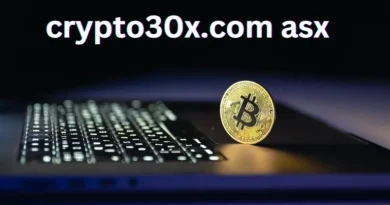Bitcoin Halving: The 2025 Ripple Effects on Miners, Markets, and Investors
The Bitcoin halving of April 2024 marked the fourth time in history that miner rewards were cut in half from 6.25 BTC to 3.125 BTC per block. This event, pre-programmed into Bitcoin’s code, continues to shape the cryptocurrency market well into 2025. While the halving didn’t cause an instant price surge, its impact on supply dynamics, miner economics, institutional flows, and market psychology has been profound. This deep dive explores how the 2024 halving became a 2025 market driver, supported by historical trends, on-chain data, and forward-looking scenarios.
Understanding the Bitcoin Halving
A Bitcoin halving is a scheduled protocol event that reduces the block reward by 50% every 210,000 blocks (roughly every four years).
Purpose:
-
Control inflation in Bitcoin supply
-
Maintain scarcity
-
Approach the 21 million BTC cap
The most recent halving occurred in April 2024, lowering block rewards from 6.25 BTC to 3.125 BTC.
Why the Halving Matters
The halving’s importance goes far beyond the headline reward cut:
-
Supply Shock
Less new Bitcoin enters circulation, tightening available market supply. -
Miner Economics
Miners see immediate revenue drops, forcing operational adjustments. -
Investor Psychology
Traders and institutions anticipate halvings as scarcity catalysts. -
Narrative Power
Reinforces Bitcoin’s identity as a deflationary digital asset.
Lessons from Past Halvings
-
2012: Sparked the 2013 bull run.
-
2016: Led to the 2017 parabolic rally.
-
2020: Preceded the massive 2020–2021 bull market, boosted by pandemic stimulus and institutional entry.
Key takeaway: Halvings are structural catalysts price rallies often follow months later, not immediately.
The 2024 Halving’s Ripple Effects in 2025
Although the halving happened in 2024, its effects have shaped 2025’s market conditions:
Institutional Adoption & ETFs
-
Spot Bitcoin ETFs have pulled significant supply off exchanges.
-
Custodial flows have amplified the halving’s scarcity effect.
Miner Consolidation
-
Inefficient miners exited.
-
Larger players expanded with better equipment and cheaper energy sources.
Liquidity Tightening
-
Exchange reserves continued to drop through 2025.
-
Long-term holders (HODLers) increased accumulation.
Macro Backdrop
-
Interest rate trends and inflation data in 2025 influenced Bitcoin’s risk appeal.
-
Easier monetary conditions strengthened the halving’s bullish effects.
On-Chain Metrics That Matter in 2025
To track the halving’s influence, analysts focus on:
-
Exchange Reserves: Falling balances = reduced selling pressure.
-
Miner Revenue & Hash Rate: Indicators of miner health and network security.
-
Long-Term Holder Behavior: Accumulation supports price stability.
-
ETF Flows: Sustained inflows signal institutional confidence.
-
Futures Funding Rates: Measure leverage and market sentiment.
The Miner Story
Impact on Miners Post-Halving:
-
Capitulation: Some miners shut down due to low profitability.
-
Efficiency Gains: Survivors upgraded hardware and secured cheaper power.
-
Hedging: Larger miners used derivatives to stabilize income.
Result: The mining industry emerged more consolidated and resilient by mid-2025.
Why Halvings Don’t Guarantee Immediate Rallies
-
Priced-In Effect: Markets anticipate halvings.
-
Macro Overrides: Interest rate hikes or liquidity shocks can negate bullish effects.
-
Lagging Impact: Historically, major price moves occur 6–18 months after halving.
2025 Market Narrative: Catalysts & Risks
Catalysts
-
ETF adoption and institutional buying
-
Long-term holder accumulation
-
Miner stability and reduced selling pressure

Risks
-
Regulatory crackdowns
-
High leverage in derivatives markets
-
Global economic shocks
Beyond Price: Adoption Trends
-
Payments & Layer-2: Growth in faster, cheaper Bitcoin transactions.
-
Corporate & Sovereign Interest: Increased treasury allocations.
-
Sustainability: Shift toward renewable-powered mining.
Scenarios for 2025–2026
Bull Case:
-
Strong ETF inflows, reduced supply, macro easing → New all-time highs.
Base Case:
-
Gradual uptrend with volatility as adoption grows steadily.
Bear Case:
-
Regulatory or macro shocks overwhelm scarcity effects.
Key Takeaways
-
Halving is a long-term bullish factor, not a short-term price trigger.
-
Watch exchange reserves, miner health, ETF flows, and macro trends.
-
Institutional adoption in 2025 magnified the halving’s scarcity effect.
-
Regulatory and macro risks remain the biggest wildcards.
Conclusion
The 2024 Bitcoin halving was not just a date on the blockchain it was the start of a multi-year market transformation. By 2025, its influence was felt across miner operations, institutional flows, on-chain liquidity, and global investor sentiment. While halvings are predictable, their true market impact unfolds slowly, shaped by macroeconomic conditions and adoption trends. As 2025 continues, Bitcoin’s scarcity story remains intact, making the halving a cornerstone catalyst for the current and future crypto market cycles.
Frequently Asked Questions (FAQ)
What is a Bitcoin halving?
A Bitcoin halving is a programmed event in Bitcoin’s blockchain that reduces the block reward given to miners by 50% approximately every four years. This controls the rate of new Bitcoin creation and reinforces its scarcity.
When was the most recent Bitcoin halving?
The latest halving occurred in April 2024, reducing miner rewards from 6.25 BTC to 3.125 BTC per block.
Why is the halving important?
It matters because it limits supply growth. If demand remains the same or increases while new supply slows, economic theory suggests upward pressure on price over the long term.
Does the halving always cause Bitcoin’s price to rise?
Not immediately. Historically, significant rallies have occurred 6–18 months after halvings. Market conditions, macroeconomic factors, and adoption trends all influence timing.
How does the halving affect miners?
Miners’ rewards are cut in half overnight. This reduces profitability for less efficient miners, leading to consolidation in the mining industry. Efficient miners often survive and expand.
How did the 2024 halving influence 2025?
Its effects extended into 2025 by:
-
Tightening supply on exchanges
-
Forcing miner consolidation
-
Strengthening institutional accumulation via ETFs
-
Interacting with macroeconomic trends like interest rate shifts
How can investors prepare for a halving?
-
Focus on long-term holding rather than short-term speculation
-
Track on-chain metrics like exchange reserves and miner revenues
-
Be mindful of macroeconomic conditions and regulatory news
What role do ETFs play after a halving?
Spot Bitcoin ETFs can accelerate the scarcity effect by removing coins from exchange liquidity and locking them in long-term custody.
Is the halving’s effect purely about price?
No. It also impacts:
-
Miner operations and sustainability
-
The narrative of Bitcoin as a scarce asset
-
Institutional adoption and payment infrastructure growth
When is the next Bitcoin halving?
If block production remains consistent, the next halving is projected for 2028, reducing rewards from 3.125 BTC to 1.5625 BTC per block.




